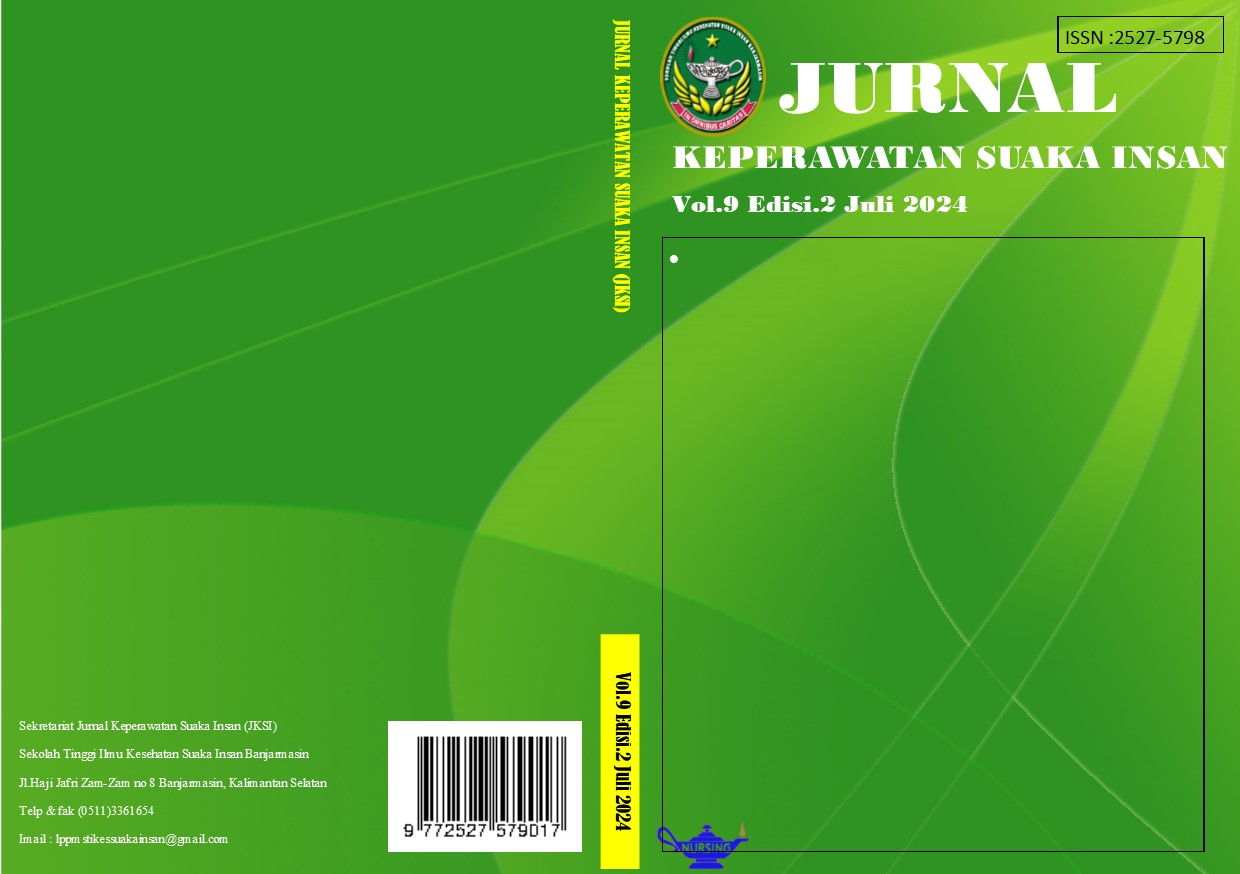ACUPRESSURE THERAPY IN HOLISTIC NURSING FOR THE RECOVERY OF CRITICALLY ILL PATIENTS IN THE INTENSIVE CARE UNIT
DOI:
https://doi.org/10.51143/jksi.v10i1.823Keywords:
Acupressure, Critically Ill Patients, Holistic Nursing, Intensive Care UnitAbstract
Critically ill patients with various complications and symptoms that can affect their quality of life. Acupressure has garnered interest as a potential non-pharmacological adjunctive therapy to accelerate the recovery of critically ill patients in the ICU, a technique that nurses can perform. This study employed a scoping review methodology. Literature searches were conducted across leading medical databases, including PubMed, Science Direct, and ProQuest. Inclusion criteria comprised original studies, systematic reviews, and case reports published within the last five years. The review followed the Preferred Reporting Items for Systematic Reviews and Meta-Analyses (PRISMA) guidelines. The results show that various acupressure therapy methods used for critically ill patients with clinical conditions such as degenerative diseases and cardiovascular diseases, have the potential to reduce pain and anxiety, improve sleep quality, lower blood pressure, reduce nausea and vomiting, and enhance immune system function for ICU patients. This research aims to provide a foundation for integrating acupressure into holistic nursing care for critically ill patients, thereby improving both their quality of life and recovery.
Downloads
Published
How to Cite
Issue
Section
License
Copyright (c) 2025 Hana Priscilla Frudence Sohilait, Nurul Safira Lahati

This work is licensed under a Creative Commons Attribution 4.0 International License.
Authors who publish with Jurnal Keperawatan Suaka Insan (JKSI) agree to the following terms:
1) Authors retain copyright and grant Jurnal Keperawatan Suaka Insan (JKSI) right of first publication with the work simultaneously licensed under a Creative Commons Attribution License CC BY that allows others to remix, adapt, and build upon the work with an acknowledgment of the work’s authorship and initial publication in this journal.
2) Authors are able to enter into separate, additional contractual arrangements for the non-exclusive distribution of the journal’s published version of the work (e.g., submit it to an institutional repository or publish it in a book), with an acknowledgment of its initial publication in this journal.
3)Authors are permitted and encouraged to post their work online (e.g., in institutional repositories or on their website) prior to and during the submission process, as this can lead to productive exchanges, as well as earlier and greater citation of published work (see the discussion about The Effect of Open Access).











